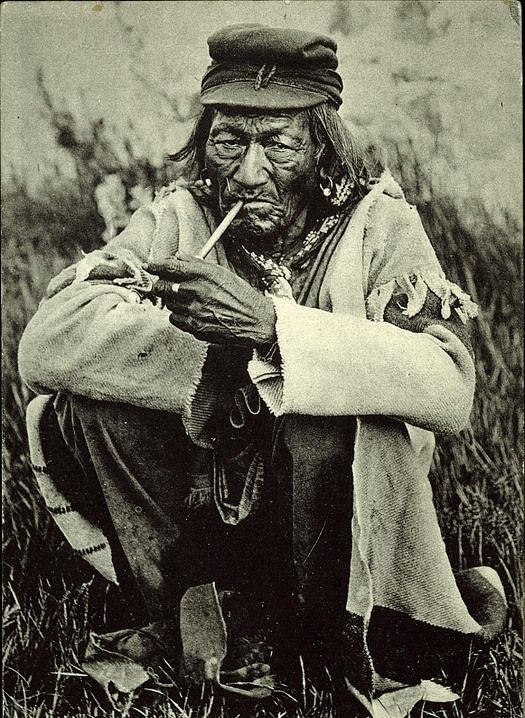
Following the 1876 Battle of the Little Bighorn in which the American 7th Cavalry under the command of Lt. Col. George Custer attacked a peaceful camp of Sioux, Northern Cheyenne, and Arapaho Indians which resulted in the massacre of the American troops, some of the Sioux bands fled north, seeking political asylum in Canada.
Seeking asylum from the brutality of American troops was not something new. In 1862, for example, many Dakota refugees from the United States began to settle in the small Manitoba towns near the border with Minnesota. They were fleeing from the American army whose general had stated:
“It is my purpose utterly to exterminate the Sioux if I have the power to do so.”
When news of the Little Bighorn battle reached Canadian authorities, they anticipated that American military actions against the Sioux would result in Indians seeking refuge in Canada. The North-West Mounted Police were advised to pay particular attention to activities in the Wood Mountain region of Saskatchewan. Additional men were dispatched to Forts Macleod and Walsh. There were rumors that the Sioux were seeking an alliance with the Canadian Blackfoot, longtime Sioux enemies, to go to war against non-Indians in Canada.
One of the first refugees to reach Saskatchewan was a party of predominantly Brule Sioux under Lame Brule. They had come north from the Yellowstone fleeing from the American army. The group had about 400 people.
Next came 58 Hunkpapa Sioux lodges under the leadership of Black Moon who settled at Wood Mountain. Travelling with Black Moon were Sioux leaders Little Knife, Long Dog, and Man Who Crawls.
Sioux bands, both large and small, continued to cross into Canada. North-West Mounted Police superintendent James Walsh visited the Sioux refugees at Wood Mountain. He estimated that the group had 2,900 people (500 men, 1,000 women, and 1,400 children), along with about 3,500 horses and 30 U.S. government mules. The Indians told him that they were looking for peace and that they had been driven from their homelands by the U.S. army. Walsh instructed the Indians on the law as it would affect their stay in Canada and was assured by the chiefs that they would not use Canada as a base for renewed hostilities against the Americans.
In 1877, many Sisseton Sioux and the Wahpeton Sioux settled on the Standing Buffalo Reserve in Saskatchewan.
In 1877, Four Horns led his Sioux band of 57 lodges across the border from the United States to seek refuge in Canada. Four Horns was a civil and spiritual chief. Traveling with them was a band of Yanktonai under Medicine Bear from the Fort Peck Agency. The Indians were destitute and reported that they had to consume their horses during their march to Canada. North-West Mounted Police superintendent James Walsh met with them and explained the conditions under which they might remain in Canada.
Also in 1877, Sioux leader Sitting Bull brought 135 lodges of his people north from the United States to find refuge in Canada. Travelling with Sitting Bull was a small band of Sans Arc Sioux under Spotted Eagle and Minneconjou Sioux under Swift Bird. They settled in the White Mud River area. Historian Robert Larson, in his biography Gall: Lakota War Chief, writes:
“The entire region must have appeared to Sitting Bull’s and Gall’s bands as the promised land. Buffalo still roamed its greening plains in greater numbers than in the United States.”
Major James Walsh of the North-West Mounted Police met with Sitting Bull and told him that the Sioux would now have to obey the queen’s laws and in return they would receive the queen’s protection. He warned the Sioux that they were not to return to the United States to hunt or to steal. Historian Robert Larson reports:
“The Mounted Police were usually fair in their judgments; indeed, some of them, including Walsh, honesty believed that the Lakotas had been badly treated below the Canadian border.”
Sitting Bull agreed to the terms offered by Walsh and declared his intent to remain in Canada.
In her short biography of One Bull in North Dakota History, Carole Barrett reports:
“While in Canada the people faced many difficulties, chief of which were a lack of food and constant pressure to return to the United States. It was during this time Sitting Bull gained an exaggerated prominence in the American press. Touted as the mastermind of Custer’s demise at the Little Bighorn, he gained much fame as the last holdout of the Indian wars.”
In Saskatchewan, the Sioux held their Sun Dance at Wood Mountain.
In Saskatchewan, Sioux leader Sitting Bull held a peace council with Blackfoot leader Crow Foot. The agreement brought peace to the two tribes.
North-West Mounted Police superintendent James Walsh attempted to meet with Sioux leader Sitting Bull to convince him to meet with an American delegation to discuss his return to the United States. Sitting Bull’s son had just died and the chief was in mourning and not interested in a council.
At this time, three Nez Perce warriors [Half Moon, Left Hand (Wep-sus-whe-nin) and Wel-la-he-wite] arrived asking the Sioux for help in a battle against the American army which was taking place just south of the border. Historian Jerome Greene, in his book Beyond Bear’s Paw: The Nez Perce Indians in Canada, writes:
“These Nez Perces could not speak the language, nor were they adept at sign language. When they tried to sign for ‘water’ and ‘stream’—to connote Snake Creek—the Sioux misunderstood it to mean the Missouri River, a considerable distance away and too far to travel for them to be able to materially assist the besieged Nez Perces.”
The arrival of three more Nez Perce men—Peopeo Tholekt, Koo-sou-yeen, and James Williams—helped straighten out the confusion. Walsh cautioned the Sioux that if they went to the aid of the Nez Perce they would lose their privilege to live peacefully in Canada.
Later that year, the Sioux meet with North-West Mounted Police superintendent James Walsh and gave him their response to his request that they meet with an American commission:
“Why do you come and seek us to go and talk with men who are killing our own race? You see these men, women, and children, wounded and bleeding? We cannot talk with men who have blood on their hands. They had stained the grass of the White Mother with it.”
However, Walsh convinced Sitting Bull and 25 others to come with him to Fort Walsh.
At Fort Walsh, the Sioux met in council with an American delegation. The Sioux leaders included Sitting Bull, Bear’s Cap, Spotted Eagle, Whirlwind Bear, Flying Bird, Iron Dog, Medicine Turns-around, The Crow, Bear that Scatters, Yellow Dog, and Little Knife. Only Bear’s Cap shook hands with the Americans. Historian Jerome Greene reports:
“The traditional pipe ceremony that normally accompanied such gatherings was absent.”
The Americans told the Sioux that none of those who had surrendered had been punished for hostile acts and all had been received as friends. In offering peace with the Sioux, the Americans asked that they give up their guns and horses, conditions which were not acceptable to the Sioux.
Sitting Bull responded to the Americans by telling of his affection for Canada and even pausing to shake hands again with the Canadians. He concluded:
“You come here to tell us lies, but we don’t want to hear them. Go back home where you came from.”
Among those who addressed the American delegation was The One that Speaks Once, the wife of Bear that Scatters:
“These are the people that I am going to stay with and raise my children with.”
The Americans were insulted and offended by allowing a woman to speak to them in council.
In 1878, an additional 240 Sioux lodges sought asylum in Canada. The bands were under the leadership of Little Hawk and Fools Heart. According to historian Robert Larson:
“The arrival of American Indians to the grasslands of southern Saskatchewan undoubtedly disturbed the Canadian tribes. Such longtime enemies of the Lakotas as the Crees, Blackfeet, Piegans, and Bloods were especially suspicious, but as long as the bison herds were plentiful, there would be no major conflict; the Northwest Mounted Police would see to that.”
In 1880, Major Walsh, the Northwest Mounted Police officer who had been dealing with Sitting Bull’s Sioux was reassigned. Historian Robert Larson writes:
“Walsh, probably the only white man Sitting Bull ever fully trusted, felt a genuine concern over the fate of this strong-willed leader and his people.”
Lief N.F. Cozier replaced him and began to pressure the Sioux to return to the United States. He persuaded the young Sans Arc Sioux leader White Eagle of the futility of staying in Canada.
Life in Canada was difficult: the Canadians tended to be parsimonious with rations and the buffalo were becoming scarce. Driven by hunger, many of the Sioux bands returned to the United States during the winter of 1880-1881.
Sitting Bull led his people to Lake Qu’Appel, 150 miles to the northeast, hoping to confer with his friend Major James Walsh. However, Walsh was absent and the sergeant commanding the station was under strict orders from Ottawa not to trade, feed, or talk with Sitting Bull.
Disheartened, Sitting Bull returned to Wood Mountain. His friend Jean Louis Légaré, the Indian trader for the area, provided the Sioux with a costly feast and attempted to persuade Sitting Bull to return to the United States. Sitting Bull told Légaré that he intended to stay at Wood Mountain. Légaré then announced that he would be taking a caravan of Red River carts to Fort Buford, Montana, and that the Sioux were welcome to ride along.
In an article in North Dakota History, Paul Hedren reports:
“When Légaré’s caravan passed Sitting Bull’s camp a few miles south of Willow Branch, dozens of Hunkpapas piled into twenty of the vehicles, but the chief and some of his closest followers again demurred. Before resuming the trail, Légaré detached seventeen empty carts at the village and encouraged Sitting Bull and the others to follow. To the trader’s surprise, that evening the chieftain and his adherents joined their camp.”
Légaré sent one of his employees to Fort Buford to let Major Brotherton know that Sitting Bull was coming. He asked that flour, bacon, and some tobacco be left by the trail for the Sioux and requested that no soldiers accompany the supply wagons. Brotherton sent the wagons unescorted.
In 1881, Sitting Bull and 187 members of his Lakota band surrendered to United States authorities at Fort Buford, Montana. Historian Robert Larson writes:
“Sitting Bull looked positively destitute, wearing a dirty calico shirt and covering his waist with an equally dirty blanket.”
In an article in North Dakota History, Paul Hedren writes:
“Sitting Bull’s surrender was a defining moment in the chief’s life, and he was several years arriving at this difficult decision to relinquish his freedom to the whites.”
While the Sioux refugees in Canada had once numbered over 4,000, less than 300 were left when Sitting Bull made his decision to return to the United States.
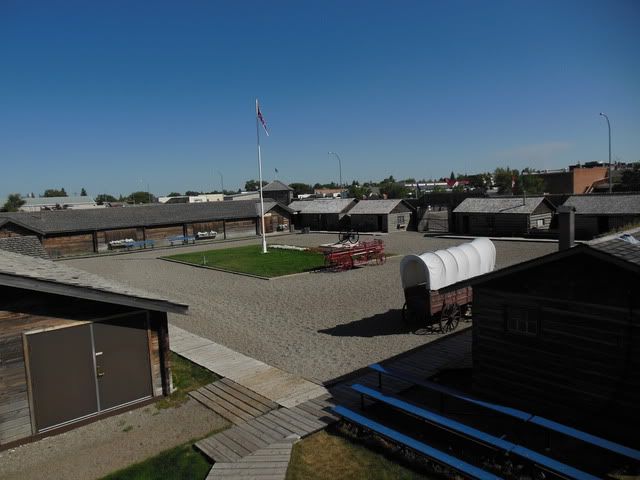
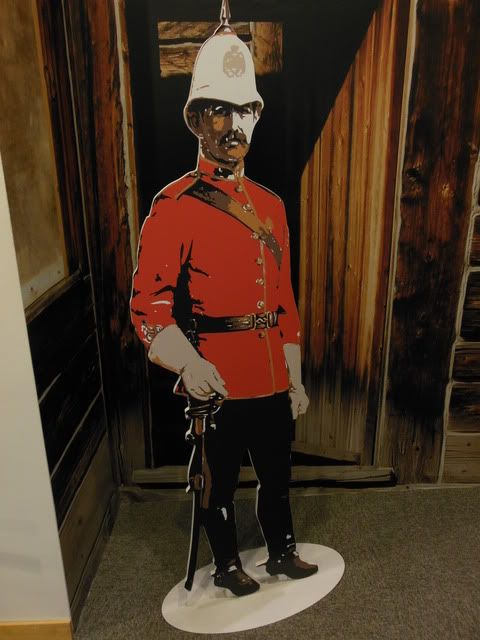
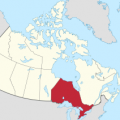
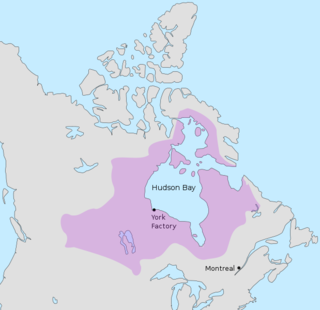
Leave a Reply